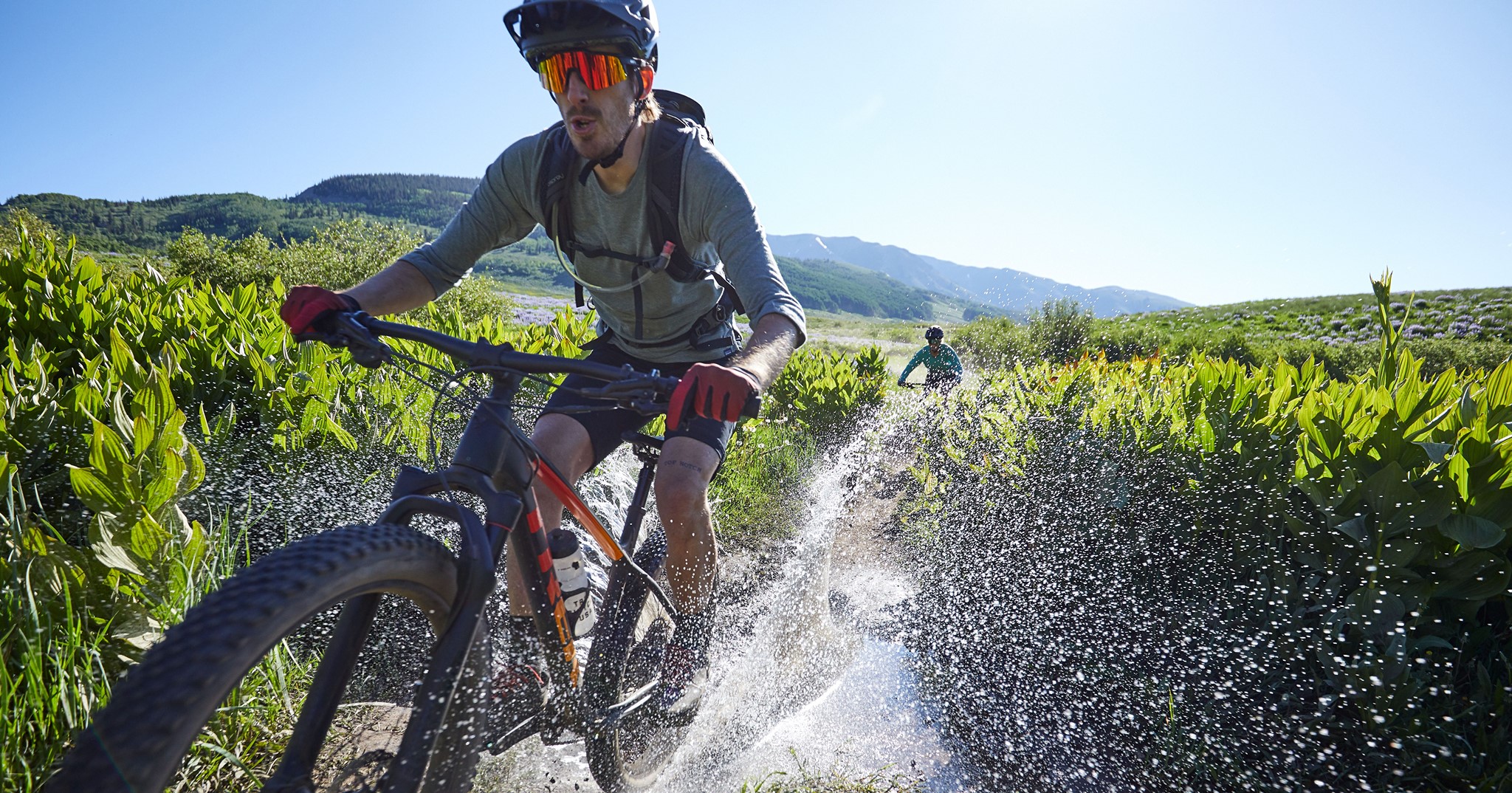TAKE CONTROL, with Wavecel is a six-part series of articles by one of South Africa’s most experienced skills instructors, Sean Badenhorst. The articles will help you understand key elements of mountain biking better so that you can improve your control when riding. Improved control leads to fewer falls, higher speeds and greater confidence. Part 1 deals with where and how to look while riding.
Paid partnership with Bontrager Wavecel
PART 1: INTENDED DIRECTION
There are three basic rules to achieving mountain biking control – Intended Direction, Controlled Momentum and Managed Centre of Gravity. Yes, there are others, but if you combine these three primary rules repeatedly every time you ride, they become intuitive and you become a more relaxed, in-control rider. We’ll focus on each in a different part of this series so that we break it down completely to give you the best shot at understanding not only what to do, but why.
One of the most common mistakes mountain bikers make is not looking up/ahead enough. By looking up/ahead, you get to see what’s approaching and are able to be reactive or proactive with sufficient time. If you don’t look up/ahead, you will have less visual information as to what is approaching and will reactively ride slower. This will also leave you with less momentum. Momentum is essential to rolling over or down small and large obstacles. This doesn’t mean don’t look closer, because you still need to scan the trail, but your default should be to look up/ahead with quick glances closer from time to time.
Where to look
The general rule is to look 10 metres ahead for every 10kph of speed you’re moving at. So if you’re riding at 15kph, look 15 metres ahead. On a straight, gravel-road descent when reaching 40kph, look at least 40 metres ahead. If you’re in a section of twisty singletrack where you can’t see that far, then look ahead to where the coming singletrack first appears as you move along it.

How to look
You have to move your head, not just your eyes when riding. When you turn your head while riding, your hips will follow and obviously so will your bike. So small head movements determine the direction your bike goes, but it has to be a full head movement and you need to keep your head pointing in that direction in order to keep your direction change constant for as long as it needs to be. Usually, the slower you go, the more you need to turn your head (think switchback turns) to maintain control. Higher speeds require smaller head movement to determine your direction.
Sense of horizon
Ideally, you should look up/ahead enough to have a sense of horizon. This ensures that you’re subconsciously aware of which way is up. Having some sky in the top of your peripheral vision gives you a sense of horizon as does seeing trees, as they grow vertically. Having trees in your peripheral vision (for example in a forest where you can’t see any sky) also gives you a sense of which way is up. Having this subconscious sense of horizon and knowing which way is up ensures you have greater control while moving. If you’re riding on fairly open land and you can’t see any sky at the top of your peripheral vision, you’re not looking up/ahead enough.

Switchback turns
The main reason (we’ll cover the others in subsequent parts of the series) that mountain bikers struggle with switchback turns is they’re not turning their heads to look up or down the trail. They go into the switchback looking at the apex of the turn and then remain looking at the apex of the turn when they should be turning their head (quite a lot) to twist their spine slightly so that their hips (and obviously bike) follow the direction of the head.
Some mountain bikers do all of this intuitively, or have learned it by starting out riding young and learning organically, often through mistakes. Others, especially those that come from a running background, struggle to make looking up/ahead a default action.
To improve your control, start doing this – on every ride:
- Look 10 metres ahead for every 10kph you’re moving (approximately)
- Turn your whole head, not just your eyes
- Be sure you have a sense of horizon
- Turn your head in switchback turns, looking up/down the trail, not down at the apex
In Part 2 of our TAKE CONTROL with Wavecel series, we’ll cover Controlled Momentum.
WHAT IS WAVECEL?

Wavecel is collapsible cellular structure that lines the inside of the helmet and is exclusive to Bontrager. Wavecel reduces rotational acceleration on impact and has been shown to be more effective than traditional foam helmets at protecting your head from certain types of bicycle falls. More details and video here.


